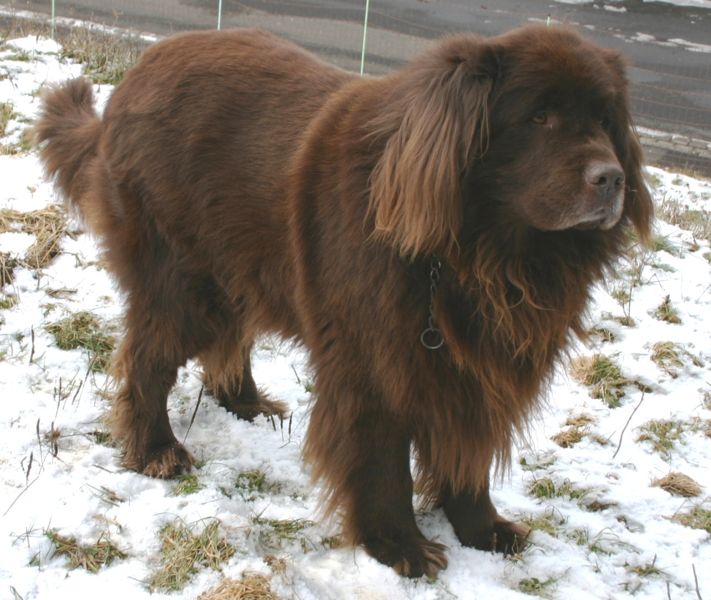
Newfoundland
Veterinarian Reviewed on December 23, 2007 by Dr. Janice Huntingford
Physical Characteristics
Breed Group:
Newfoundlanders are working dogs.
Weight:
Approximately 60-70 kg or 130-150 lbs. Females are slightly smaller weighing 45-55 kg or 100-120 lbs.
Height:
Male Newfoundlanders average height is 28 inches while females average 26 inches.
Color(s):
They’re usually black.
Coat:
Newfies, as they are affectionately known, usually have long, dark coats.
Overview
Character:
Newfies make excellent pets and are known for their extremely friendly and docile nature. They tend to be very loyal to their owners and have been known to be highly protective, especially of young children they are familiar with. Even puppies tend to be calm
Country of Origin:
They originate in Newfoundland, Canada.
History:
There are varying opinions of the history of the Newfoundland. One school of thought argues they are descendent of large dogs that came with the Vikings. However, it is believed more likely that their size is the result of breeding with mastiffs that would have been introduced to Newfoundland by various European settlers. The breed characteristics and temperament of the Newfoundland were established as far back as the early 1600s. By the 1800s, history shows that fishermen in the area used the breed to pull fishnets and equipment.
Name:
They are named after the region from which they originate, Newfoundland.
Temperament:
These are very sweet and gentle dogs who are loyal and protective. They make excellent pets; although because of their size need more space.
Care
Training:
Newfoundland dogs are quite intelligent and easily trained.
Activity:
Newfies do not need an excessive amount of exercise. Given the space to roam, they will do so freely but would even be happy lazing about the house so long as they have company.
Ownership:
Owning a Newfoundlander can be very rewarding as they are affectionate and loyal dogs. They are well-mannered and easy to care for although they are a number of genetic health problems associated with the breed. Hip dysplasia, elbow dysplasia, and cystiuria are a few of these health issues. They also drool profusely. Nonetheless, all the drooling and health problems in the world are eclipsed by the fact that they make such loving pets.
Breeders
Sign up for our newsletter and receive more articles and the latest pet health updates and special offers.
Our Expert
 Dr. Janice Huntingford
Dr. Janice HuntingfordJanice Huntingford, DVM, has been in veterinary practice for over 30 years and has founded two veterinary clinics since receiving her Doctor of Veterinary Medicine at the Ontario Veterinary College, University of Guelph. She has studied extensively in both conventional and holistic modalities. Ask Dr. Jan

